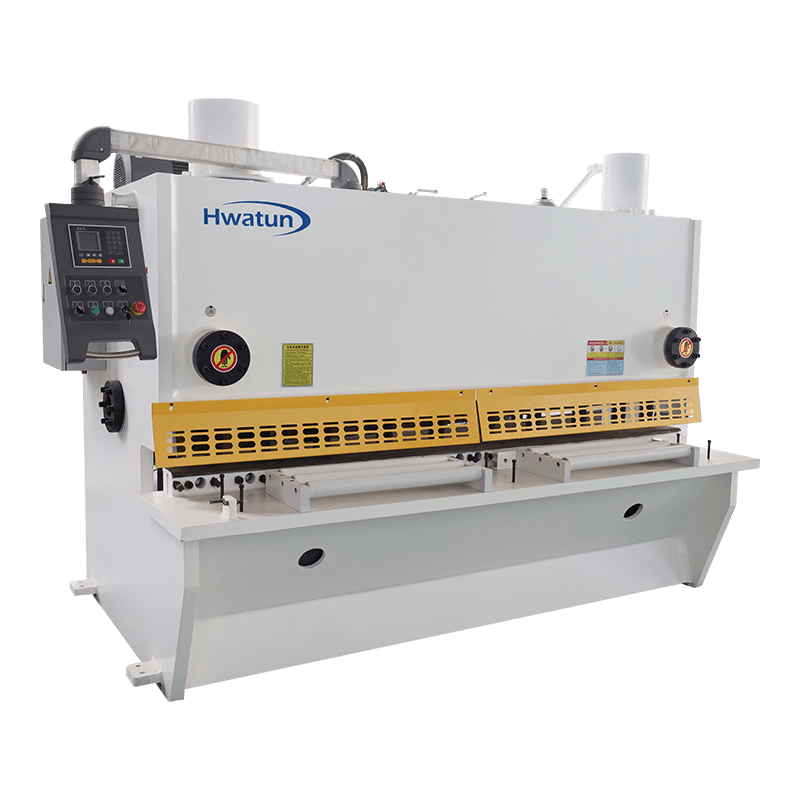Web Menu
Product Search
Exit Menu
How to perform inspection and maintenance on the Shearing Machine after it has been out of service for a long time?
After a long period of downtime, it is essential to inspect and maintain the shearing machine before resumption of work to ensure that the equipment can be restored to its optimal operating state and avoid failure or performance degradation due to long-term downtime. The following are inspection and maintenance steps before resumption of work to help ensure that the shearing machine is put into use safely and efficiently:
Cleaning and checking the external condition
Cleaning the surface of the equipment: During downtime, dust, dirt or grease may accumulate on the surface of the equipment. Use a cleaning cloth or air gun to thoroughly clean the equipment, especially the blades, transmission parts and electrical components, to prevent dust and debris from affecting the normal operation of the equipment.
Check the appearance: Check the appearance of the equipment for signs of rust, corrosion or damage. In particular, check whether the metal parts exposed to the air are oxidized, rusted or cracked. If problems are found, take repair or replacement measures in time.
Check the electrical system and control panel
Electrical circuit inspection: Check the electrical system and circuit of the shearing machine to ensure that there is no looseness, aging or damage. Cables, plugs and connectors should be intact and connected tightly.
Check the control panel: Check the control panel and operation interface to ensure that buttons, switches, display screens, etc. are working properly. Check whether the emergency stop button and safety device are effective.
Test the power supply: Before turning on the power, make sure that the power supply is normal and check whether the electrical components (such as fuses, contactors, etc.) are faulty.
Check the hydraulic system
Check the hydraulic oil: The hydraulic system of the hydraulic shearing machine needs to ensure that the hydraulic oil is sufficient and not contaminated. Check the oil level of the hydraulic oil to ensure that the level is within the normal range. If the hydraulic oil is deteriorated or contaminated, it needs to be replaced in time.
Check the hydraulic pipeline: Check whether the hydraulic pipeline, hose and joints have cracks, aging, leakage or looseness. If there are leaks or damage, they should be replaced or repaired in time.

Check the hydraulic pump and valve: Check the working condition of the hydraulic pump and control valve to ensure that there are no abnormal sounds or failures. When starting the hydraulic system, observe the pressure gauge to confirm whether the pressure is normal.
Check the shear blade and cutting system
Check the blade: After a long period of non-use, the blade of the shearing machine may be rusted, worn or damaged. Check whether the blade is sharp and whether there are cracks, nicks or other damage. If the blade is found to be severely worn or damaged, it must be replaced.
Adjust the blade gap: Check the gap between the blades to ensure that it meets the manufacturer's recommended specifications. If the blade gap is too large or too small, it may cause uneven shearing or damage the blade. Be careful when adjusting the blade gap to ensure symmetrical adjustment to avoid imbalance or deflection.
Check the cutting angle: Make sure the cutting angle of the blade is correct to avoid uneven blade cutting or other quality problems.
Check the mechanical transmission system
Check the transmission system: Check the transmission system of the shearing machine, including the motor, belt, gear, coupling, etc. for wear or looseness. Make sure that the motor can start normally and the transmission part runs smoothly without sticking.
Lubrication check: Check all parts that need lubrication to ensure that the lubricating oil or grease is sufficient at each lubrication point. If the lubricating oil is deteriorated or lacking, add or replace it in time.
Check the bearings: Check whether there are abnormal sounds or excessive wear on the bearings in the transmission system. Clean and lubricate the bearings as necessary and replace them if necessary.
Check the hydraulic oil circuit and filter system
Check the oil circuit and filter: Clean and check the filter and oil circuit of the hydraulic system to ensure that there is no blockage, contamination or other faults. The filter should be replaced regularly according to the usage to prevent impurities from entering the hydraulic system and affecting the shearing effect.
Check the cylinder and seals: Check the hydraulic cylinder, seals and their working condition to ensure there is no leakage or aging. Replace aged or damaged seals to prevent oil leakage from affecting the normal operation of the hydraulic system.
Through these inspection and maintenance steps, the shearing machine can resume work smoothly, ensuring that the equipment can maintain efficient and stable working condition after being put into production. At the same time, long-term maintenance can effectively extend the service life of the equipment and reduce production stoppages and economic losses caused by equipment failures.
News categories
Product categories
Related Products
 +86-159 5138 1316
+86-159 5138 1316 +86 180 6819 3096
+86 180 6819 3096 [email protected]
[email protected] Group 4, Xinba Village, Binhai New Area (jiaoxie Town), Laoba Port, Nantong City, Jiangsu, China.
Group 4, Xinba Village, Binhai New Area (jiaoxie Town), Laoba Port, Nantong City, Jiangsu, China.
Copyright © Nantong Hwatun Heavy Machine Tool Co., Ltd. All Rights Reserved.

 Eng
Eng  简体中文
简体中文 Español
Español русский
русский







